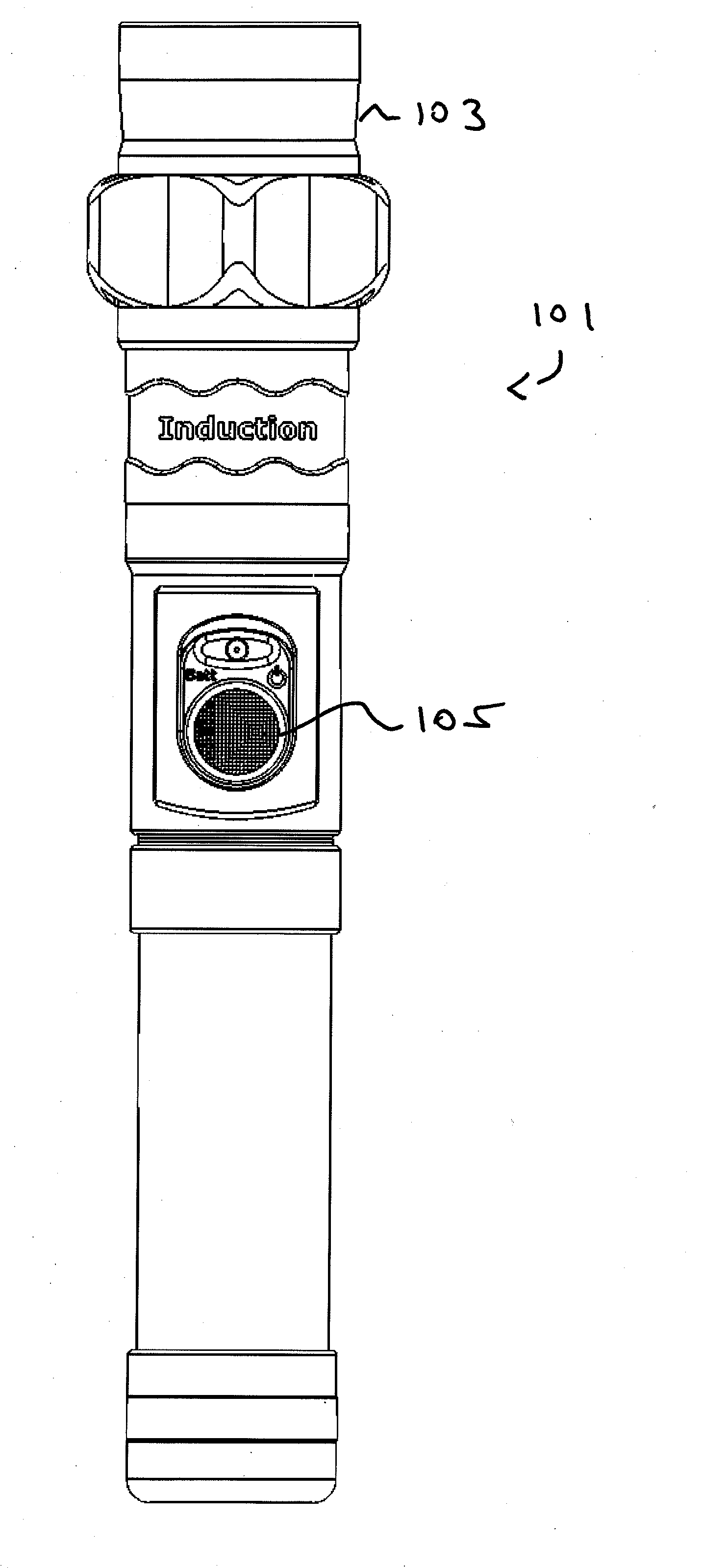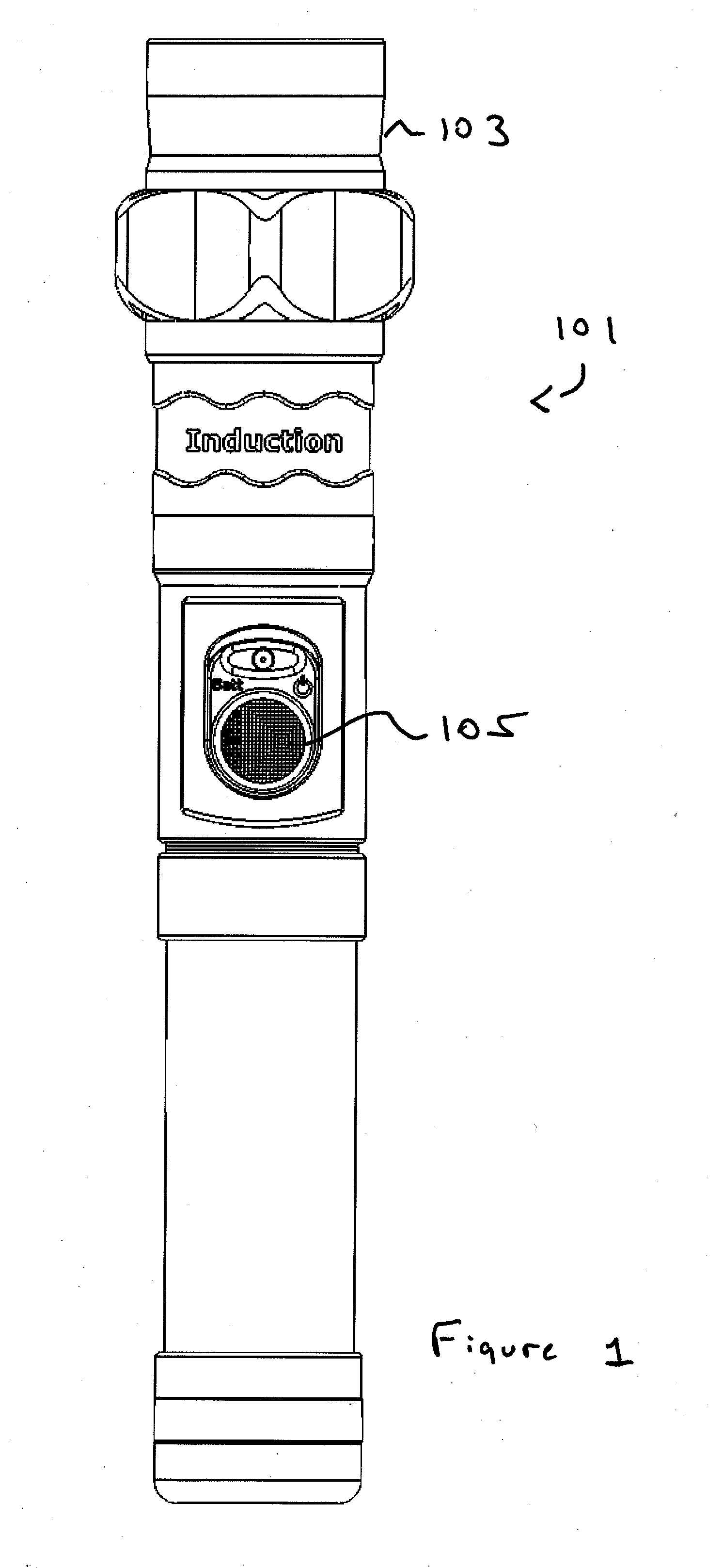Inductive Flashlight Charging System with Concentric Coils
a charging system and inductive technology, applied in the field of inductive flashlight charging system, can solve the problems of affecting the effect of the light source, and requiring a large amount of adjustment, so as to achieve the effect of maximizing the interfacing area, and not affecting the design of the reflector
- Summary
- Abstract
- Description
- Claims
- Application Information
AI Technical Summary
Benefits of technology
Problems solved by technology
Method used
Image
Examples
Embodiment Construction
[0024]FIG. 1 illustrates a flashlight 101 that can be charged with induction, which does not require any contact points on the flashlight 101 or the charger 301, and thus does not have any contact points exposed, according to one embodiment of the present invention. The section below the head 103 and above the switch 105 contains the secondary coil 201 for charging. In FIG. 2, the secondary coil 201 in the flashlight 101 is shown. As illustrated in FIG. 2, the secondary coil 201 is positioned in a circumference around the body of the flashlight 101.
[0025]FIG. 3 illustrates a corresponding charger 301, according to one embodiment of the present invention. As illustrated, the primary coil 303 is positioned in the charger 301 for charging the flashlight 101. FIG. 4 illustrates the flashlight 101 placed inside the charging system, according to one embodiment of the present invention. The flashlight 101 is inserted from the top into the charger 301. When the flashlight 101 is placed in t...
PUM
 Login to View More
Login to View More Abstract
Description
Claims
Application Information
 Login to View More
Login to View More - R&D
- Intellectual Property
- Life Sciences
- Materials
- Tech Scout
- Unparalleled Data Quality
- Higher Quality Content
- 60% Fewer Hallucinations
Browse by: Latest US Patents, China's latest patents, Technical Efficacy Thesaurus, Application Domain, Technology Topic, Popular Technical Reports.
© 2025 PatSnap. All rights reserved.Legal|Privacy policy|Modern Slavery Act Transparency Statement|Sitemap|About US| Contact US: help@patsnap.com



